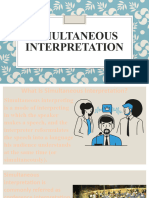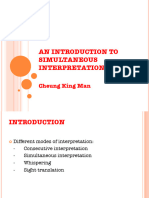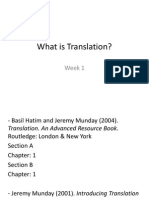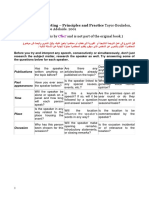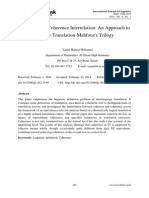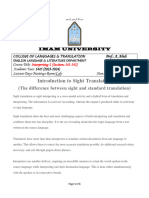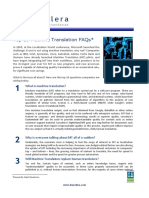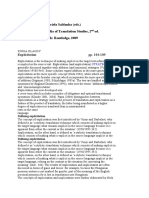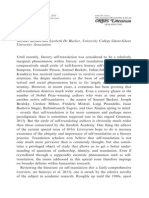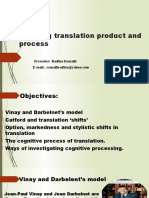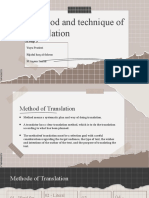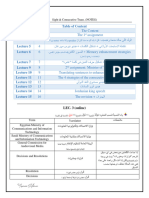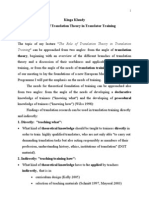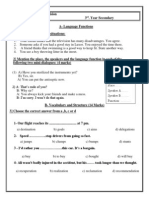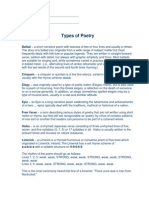0% found this document useful (0 votes)
359 views4 pagesIntroduction To Simultaneous Interpreting
This document provides an introduction to simultaneous interpreting. It defines simultaneous interpreting as listening to a spoken speech and orally interpreting it into the target language simultaneously, with only a short lag time of 2-3 seconds. It provides some tips for simultaneous interpreting, such as listening for words and phrases and giving the most immediate translation, catching the main points if speaking is too fast, and practicing extensively with recordings.
Uploaded by
Fahiem ChaucerCopyright
© © All Rights Reserved
We take content rights seriously. If you suspect this is your content, claim it here.
Available Formats
Download as PPT, PDF, TXT or read online on Scribd
0% found this document useful (0 votes)
359 views4 pagesIntroduction To Simultaneous Interpreting
This document provides an introduction to simultaneous interpreting. It defines simultaneous interpreting as listening to a spoken speech and orally interpreting it into the target language simultaneously, with only a short lag time of 2-3 seconds. It provides some tips for simultaneous interpreting, such as listening for words and phrases and giving the most immediate translation, catching the main points if speaking is too fast, and practicing extensively with recordings.
Uploaded by
Fahiem ChaucerCopyright
© © All Rights Reserved
We take content rights seriously. If you suspect this is your content, claim it here.
Available Formats
Download as PPT, PDF, TXT or read online on Scribd
/ 4


